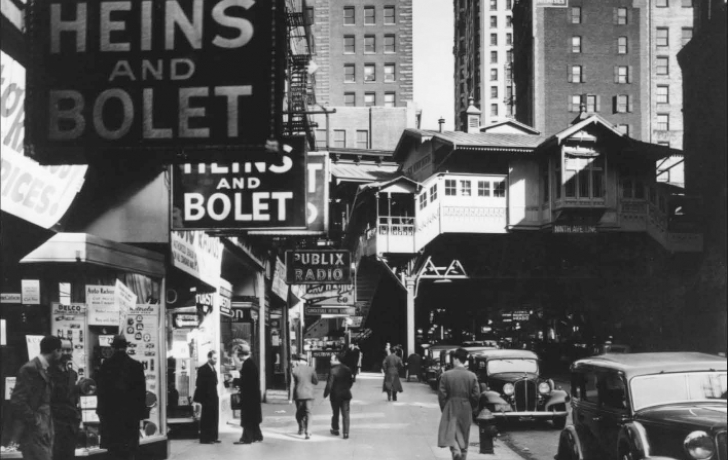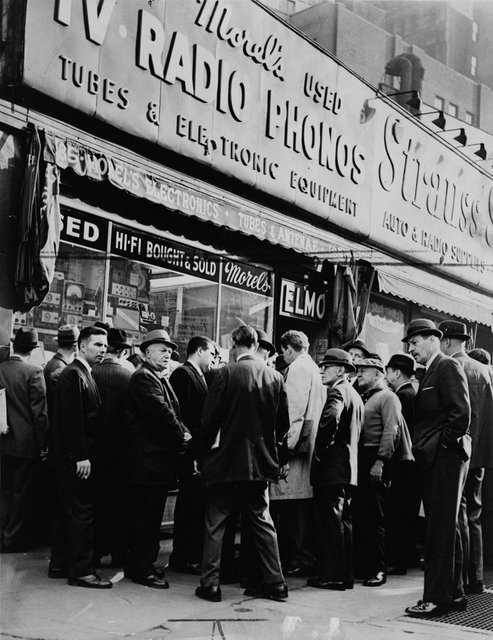 Photo from New York Public Library
Photo from New York Public Library
Before the internet and before television, there was radio broadcasting. The advent of radio at the turn of the 20th century had major repercussions on the reporting of wars along with its impact on popular culture, so it’s not surprising that a business district emerged surrounding the sale and repair of radios in New York City. From 1921 to 1966, a roughly 13-block stretch going north-south from Barclay Street to Liberty Street, and east-west from Church Street to West Street, was a thriving small business stronghold known as Radio Row.
At its peak, more than 300 businesses and over 30,000 employees were located there. Photos and first-person observation all speak to the clutter and home-grown nature of the neighborhood, with The New York Times calling it a “paradise for electronics tinkerers.” Every storefront and shop interior was jam packed floor to ceiling with parts. Other enterprising businessmen competed by displaying goods on the street. And more than just radios, it was a destination for anything surplus including sheet metal and brass–basically anything one would need to create something. Think of it as a neighborhood-size Makerspace that spilled out into the streets.

Crowd gathers in Radio Row to hear news of JFK assassination. Photo from Library of Congress by Orlando Fernandez.
Willets Point now in Queens, home to a major small-business auto repair industry being evicted in the name of environmental degradation and middle-class big box development.
The first proposal for a World Trade Center came pre-WWII in 1943. In the 1950s, David Rockefeller, chairman of Chase Manhattan Bank, became involved with the World Trade Center as a way to spur business downtown, envisioning another large footprint development akin to his successful Rockefeller Center.
Read the rest of the story of Radio Row on 6SqFt





